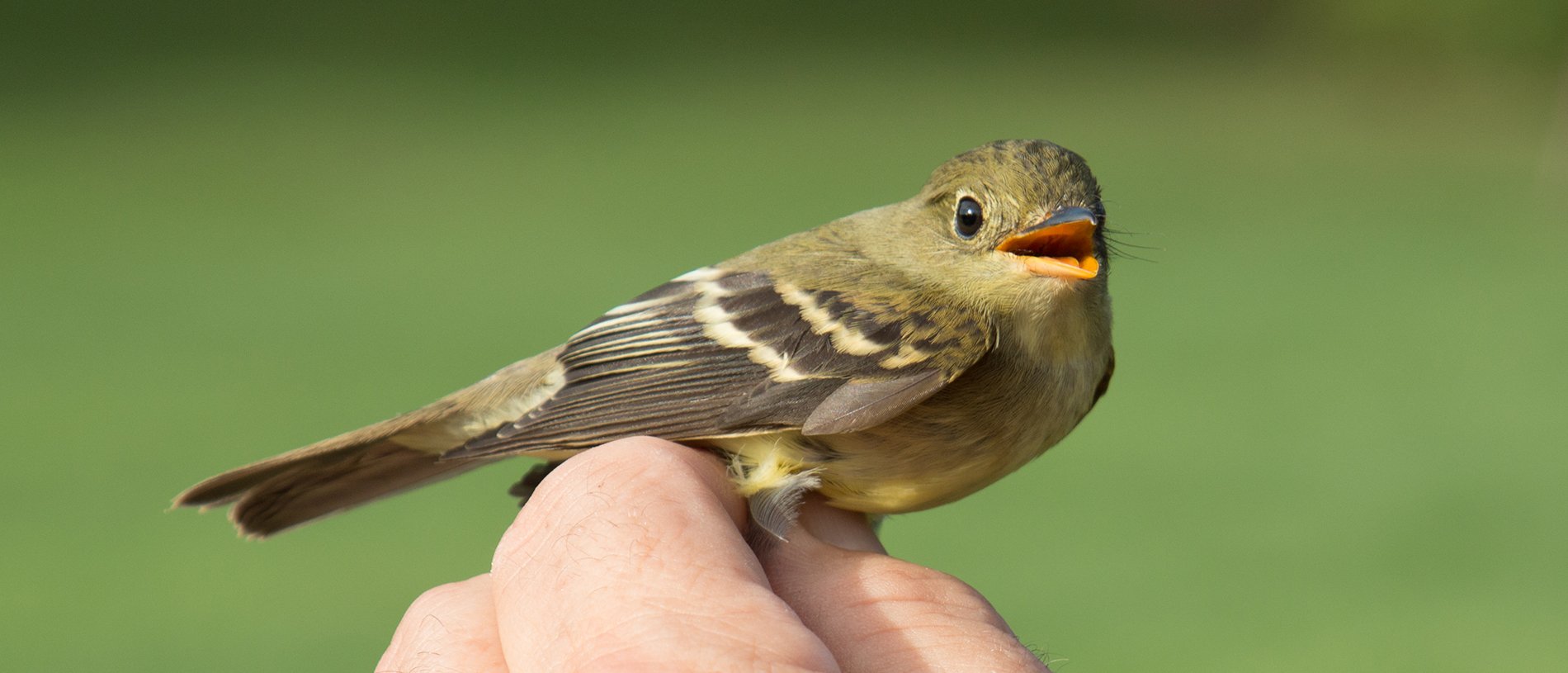Protecting Birds & Wildlife
Bird Banding
The majority of birds we see in Massachusetts do not stay here year-round. Migratory species are hardwired to travel between locations—often hundreds or thousands of miles apart—at specific times of the year to meet their changing needs. But once birds fly out of the state, it becomes extremely difficult to continue studying their populations and the broad spectrum of pressures they face.
Effective, comprehensive conservation of bird populations requires us to gain better knowledge of the stresses they face during the breeding, migration, and overwintering periods each year. But it's impossible to tell simply by sight (or sound) if a bird you observe one season is the same individual that returns the next. So what's the solution?
The answer lies in a technology that's been around since the early 20th century—banding.
Overview
Bird banding is a fundamental tool of avian research and conservation. The process usually starts by setting up a mist net, which is a special tool used by researchers to safely capture birds without harm or risk of lethal entanglement. These nets are positioned in strategic locations that migrating birds are likely to fly through. Birds are harmlessly captured in the netting and are then gently removed by certified, trained banders.
Once a bird is "in-hand" the team works to secure a small, perfectly-sized metal band around one or both of its legs. During the banding procedure, staff also gather and record data about each individual—including its species, age, sex, and physical condition (e.g., fat status, mass, molt status, breeding readiness, and other important factors). After all this information is collected, the bird is released back into the wild to continue on its way.
The key is that each band is stamped with a unique identifier that's recorded in a national banding database along with data about the individual. Researchers who re-capture a banded bird can then look up the band ID in the database to see where the bird was first tagged, which allows them to determine the distance and time it's traveled.
Research Applications
Compared to visual identification through binoculars or scopes, bird banding provides a more accurate picture of which species are passing through an area during migration. It also gives researchers a rare chance to see wild birds at very close range—to appreciate how they feels, to see details of their feather colors and structure, and even to get a sense of a bird's behavior.
Many years of effort are required before banding will start producing viable data and reveal meaningful trends. But once a project has been running for a few years, it can provide critical information about abundance, population distribution, species diversity, and even longevity.
At Mass Audubon, it can also provide insight into how migrants are using different parts of our wildlife sanctuaries and inform our habitat management decisions.
Bird Banding Stations
Mass Audubon ornithologists operate bird banding stations during spring and fall at:



